Third Quarter H-2A Data Calms Trajectory
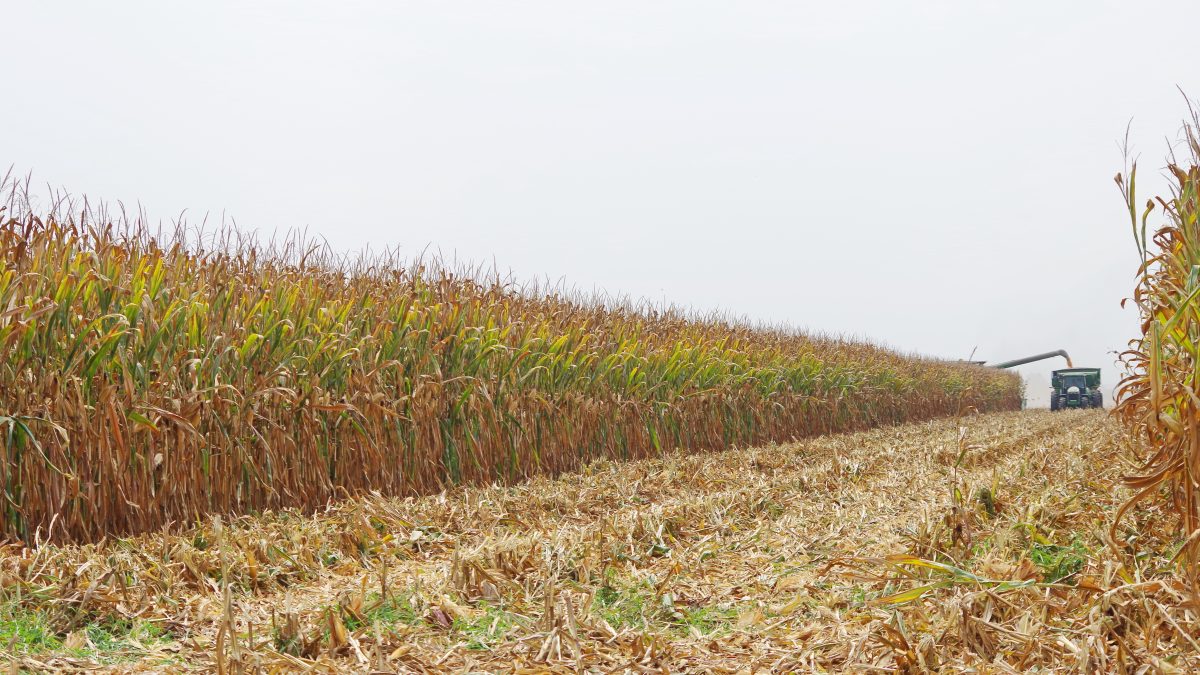
photo credit: Arkansas Farm Bureau, used with permission.
Veronica Nigh
Former AFBF Senior Economist
Last week the Department of Labor released third-quarter data on the H-2A temporary agricultural worker program. After giant increases in the number of certified positions in the first and second quarters of fiscal year 2021, third quarter numbers returned to earth. In fact, third quarter position certifications were down 3.4% compared to the third quarter of 2020. Despite this small dip, three-quarters of the way through fiscal year 2021, the total number of certified H-2A positions is up over 11% from the same period in fiscal year 2020.
Over the last decade, when full fiscal year data is examined, the H-2A program has demonstrated steady year-over-year growth, averaging 14% each year. However, the global pandemic has led to some interesting patterns that are clearly on display when quarterly data is reviewed. As seen in Figure 1, during the first two quarters impacted by the pandemic (third and fourth quarters 2020), the number of certified positions held steady, unlike years past when the number of certified positions grew during those quarters. This can be attributed to general uncertainly about the overall economy and disturbances in the normal marketing channels for fresh produce. However, by the first and second quarters of fiscal year 2021, more was known about COVID-19 and growers had much more confidence that their markets would be less disturbed, leading to a surge in the number of certified positions in the H-2A program. Data from the third quarter 2021 seems to indicate that some of the on-farm catch-up work has been completed.
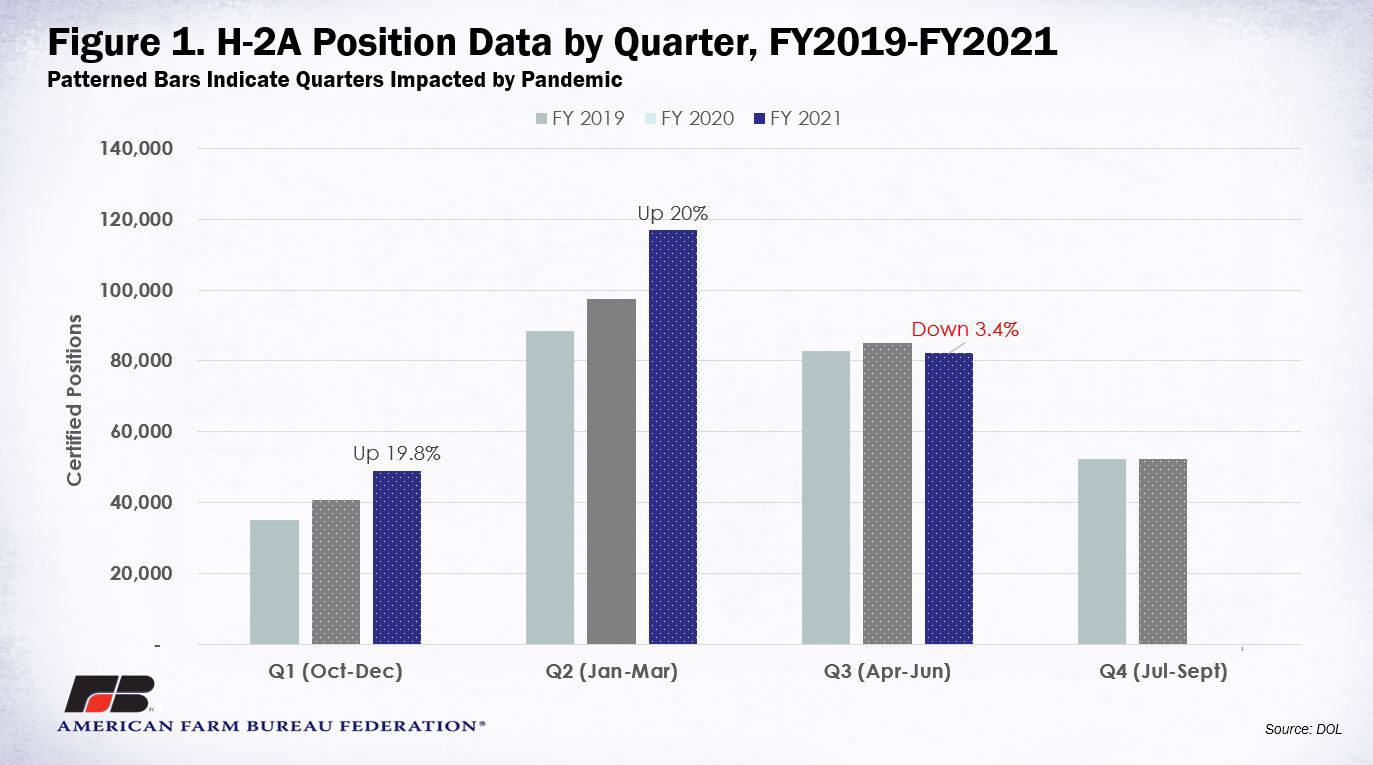
Three-quarters of the way through fiscal year 2021, the total number of certified H-2A positions totaled nearly a quarter of a million, up over 11% from the same period in fiscal year 2020. Even if there is zero growth in the number of certified positions in the fourth quarter of fiscal year 2021, which does not seem likely given that the average year-over-year growth in the fourth quarter has averaged 14% over the last five years, the total number of H-2A positions certified in fiscal year 2021 will exceed 300,000 for the first time in program history.
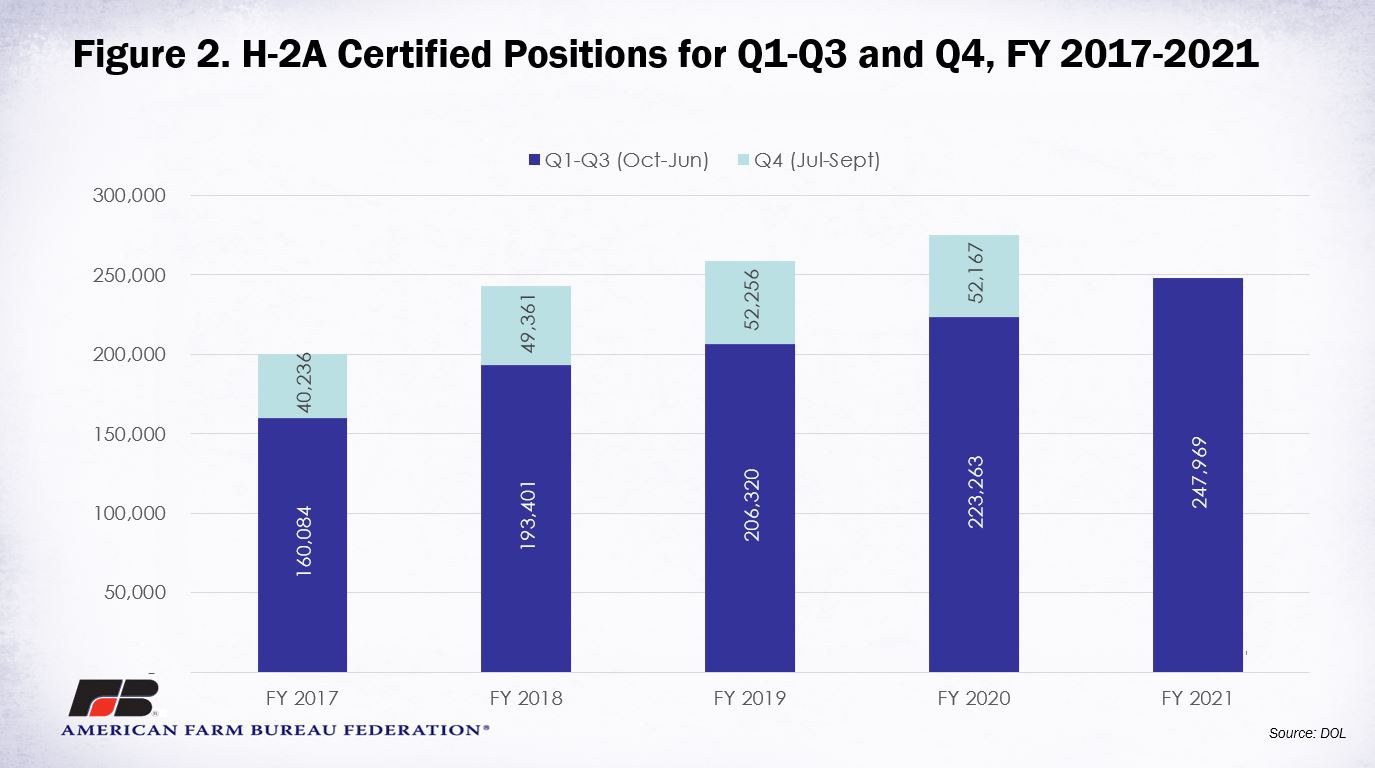
Interestingly, despite the small decline in the number of total certified positions, the number of applications DOL received in the third quarter of fiscal year 2021 was up 23% compared to the third quarter of fiscal year 2020. This, of course, means that the number of positions certified per application was significantly smaller in 2021 than 2020. As we can see in Figure 4, the average number of positions certified in each application in the third quarter of 2021 is more similar to the average number of positions in 2017-2019. This suggests that it was likely the third quarter of 2020 that was the outlier, rather than 2021. Given where we were in the third quarter of 2020 with respect to the pandemic, it seems likely that growers requested more workers than normal as a hedge against the fear that the pandemic would lead to program disruptions later in the year.
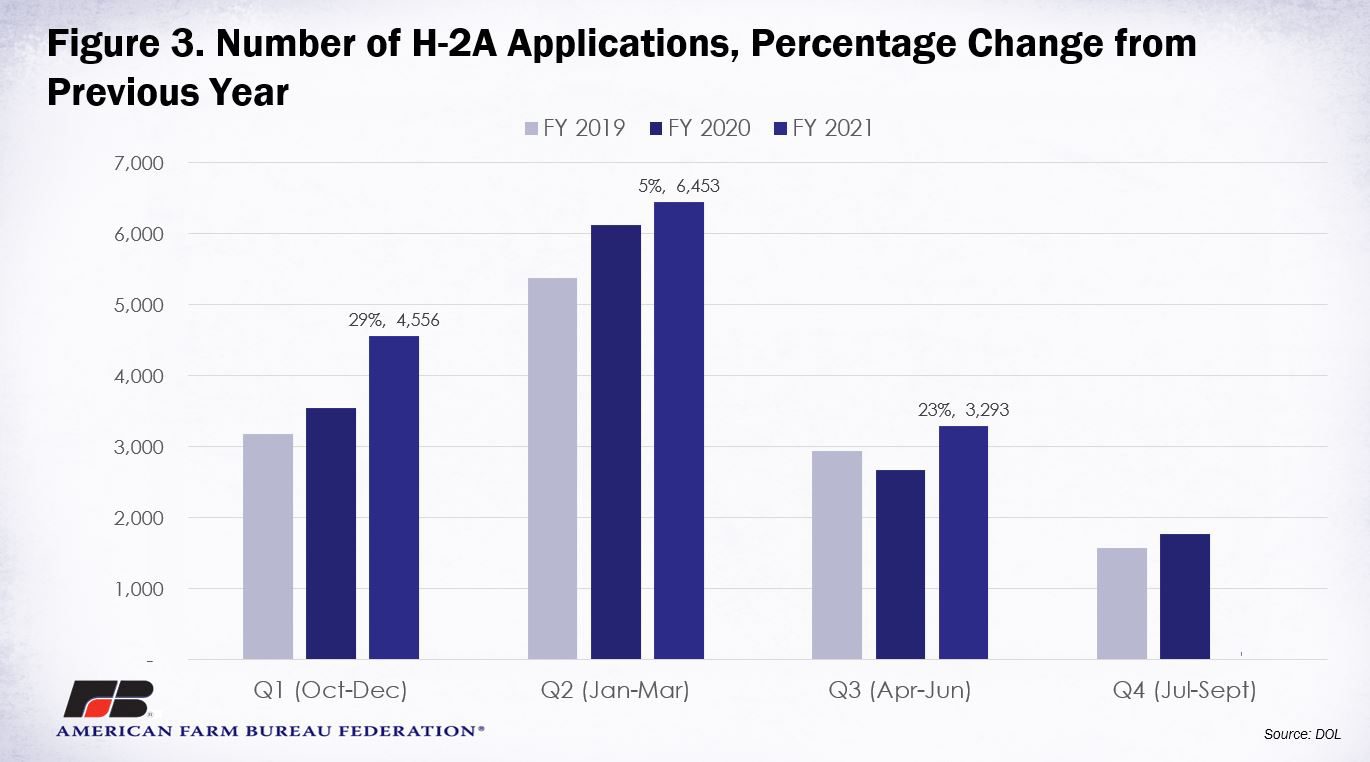
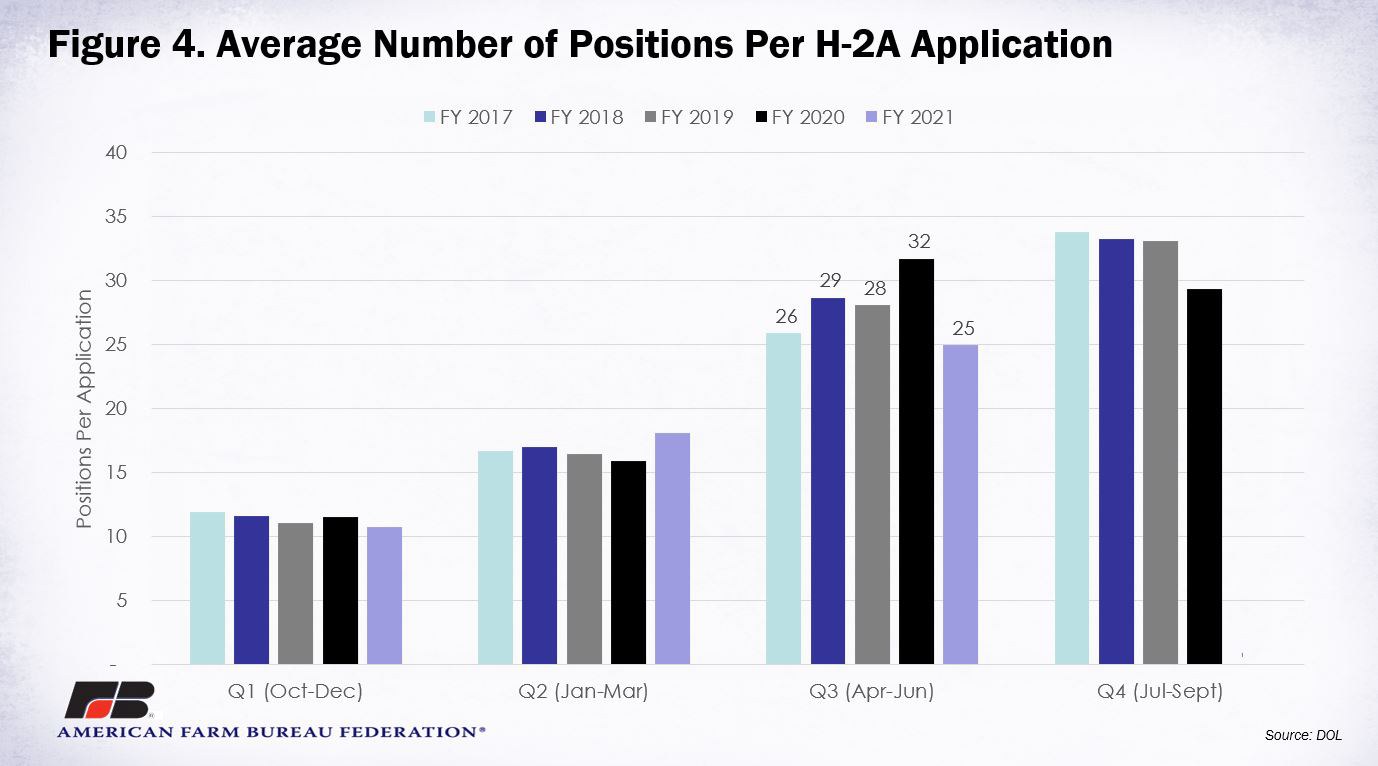
Summary
Much like all economic data in the last 18 months, understanding the patterns in the H-2A program is a challenge. Short-term vagaries caused by the global pandemic make predicting quarter-by-quarter changes difficult. Long-term, however, H-2A program data clearly demonstrates that a growing number of farming operations rely on this program as an integral part of sustaining their businesses, pandemic or not.
